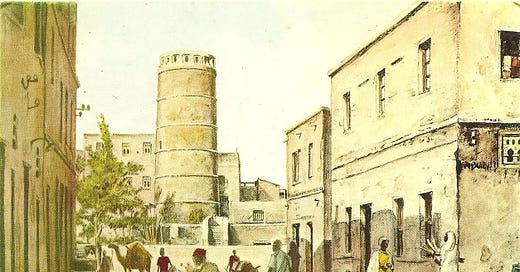As you navigate the streets of Mogadishu's oldest neighborhood, Hamar Wayne, the echoes of medieval Mogadishu can still be felt, despite the visible signs of destruction. This neighborhood is a living testament to ancient times, offering a glimpse into the vibrant and enduring history of this coastal gem. Mogadishu, or Hamar as it's locally known, was not merely a city; it was a bustling coastal hub deeply ingrained in the history and cultural traditions of the Indian Ocean. Serving as a vital piece in the puzzle of settlements, it played roles that connected it with the broader region. The name (Hamar) draws inspiration from the Arabic word "ahmar," signifying the red soil along Somalia's coast. The city's growth was intricately tied to the land behind its sandy shores, thriving in agriculture, herding, and its strategic position on the ocean. The official name of Mogadishu (Muqdisho) has sparked various theories regarding its origin. One interpretation asserts that it is derived from the Somali words 'Muuq' and 'Disho,' which literally translate to 'Sight Killer' or 'Blinder,' possibly alluding to the city's dazzling beauty. Another theory proposes the Persian term 'Maq'ad-i-Shāh,' meaning 'the seat of the Shah.' Additionally, there is a belief that 'Maq'ad-i-Shāh' has Arabic roots, from the Arabic “Maq’adu Shah, emphasizing Mogadishu's historical significance as a harbor and rest place for ships.
Mentioned first in Yakut al Hamawi's ancient writings from 1220, Hamar was described as a tribe of nomads on the mainland, with each clan guided by a shaikh.
‘Maqdishu is a city at the beginning of the country of the Zanj to the south of Yemen on the mainland of the Barbar in the midst of their country. These Barbar are not Barbar who live in the Maghrib for these are blacks resembling the Zunuj, a type intermediary between the Habash and the Zunuj. It is a city on the seacoast. Its inhabitants are all foreigners (ghuraba), not blacks. They have no king but their affairs are regulated by elders (mutaqaddimun) according to their customs’. Yakut al Hamawi
Almost a century later, the Moroccan scholar and traveler Abu Abdullah Muhammad ibn Battutah vividly painted a picture of a lively city, where merchants and camels filled the bustling streets. Hosts welcomed vessels with covered dishes of food, fostering unique trade relationships. The grandeur of Hamar's palace ceremonies and barefoot walks tell tales of a bygone era.
Stay tuned for a more in-depth journey into Mogadishu’s fascinating history. Subscribe to my Substack and explore the upcoming tales of Mogadishu's rich heritage.




